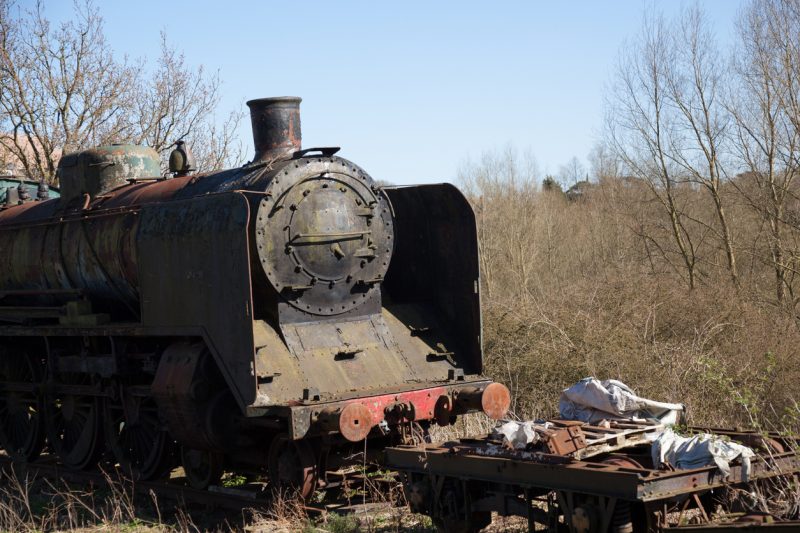In the history of warfare, tales of looting in conquered territories is quite familiar, and with a major conflict such as World War II, the loss of historical artifacts and priceless treasures obviously occurred. Many items of value or cultural significance including gold, silver, currency, art, and cultural entities worth trillions of dollars were reported missing
Legal efforts compete with illegal endeavors in Europe as both government agents and treasure hunters strive to locate relics and treasures from WWII. Although several items have been found in the years that followed the end of the war, many others have not. Whether they were stolen or not, no one seems to know, or isn’t telling, the whereabouts of these items.
Indeed, to find these long lost treasures, you’ll need much more than just an old map and a shovel. In this article we’ll discuss, in no particular order, five of the most valuable treasures from WWII which are still missing today.
Let’s get down to brass tacks.
The Amber Room
The Amber Room was considered by many as an “Eighth Wonder of the World.” Seeming alive with a magical glow, it was a resplendent combo of pure amber panels, gold leaf, mirrors, gildings, carvings, gemstones, and candles.
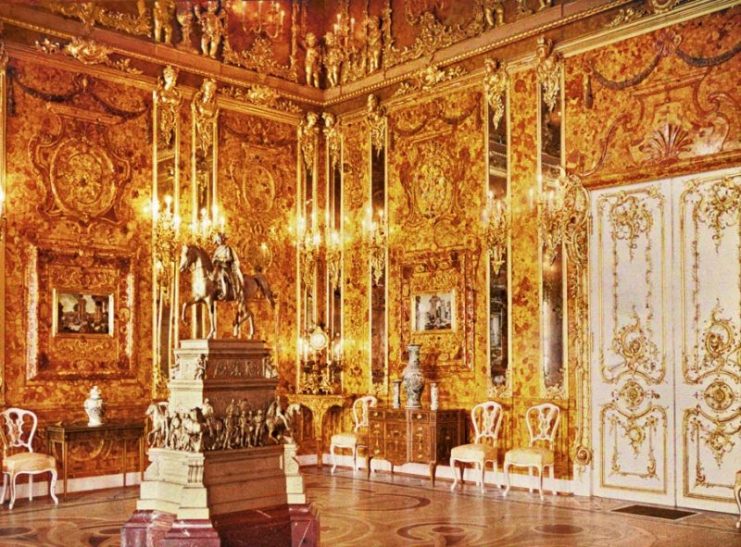
The room came into being through the hands of amber arts men in Prussia and eventually found its home near St. Petersburg, Russia, where it stood as a symbol of peace between the two empires.
However, after the Second World War began, doom loomed over the Amber Room. Adolf Hitler launched a strike force of over 3 million soldiers to invade the Soviet Union in an operation codenamed Operation Barbarossa.
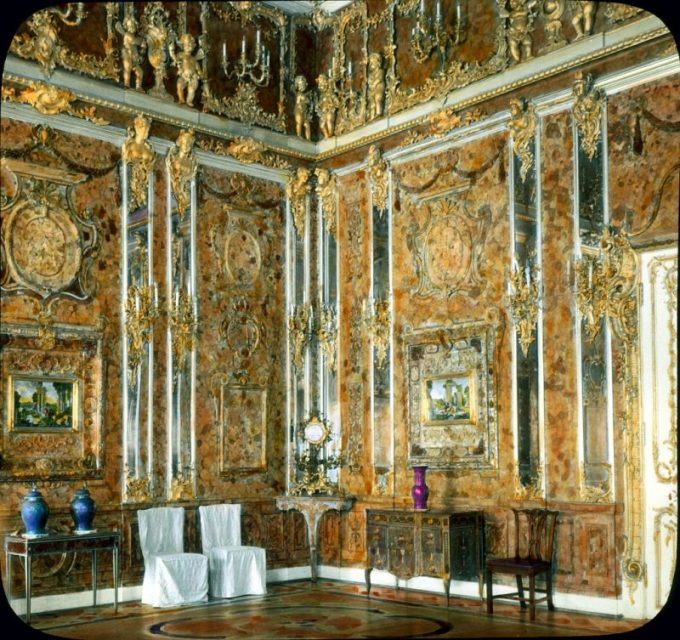
By the end of Operation Barbarossa, several treasures were carted away by Nazi Germany, and the Amber Room was not spared.
A replica of the Amber Room was completed in 2003 and can be found in the Catherine Palace, Pushkin, about 17 miles south of St. Petersburg. Besides all the elaborate decorations of the Amber Room, it contains over 900 pounds of amber panels. Its value is estimated to be around $500 million as of 2016.
However, this replica with its dazzling beauty is only a shadow of what the Amber Room used to be.

The Nazi Gold Train
The legend of the Nazi Gold Train dates back to just before the end of WWII.
In 1943, at the height of WWII, Adolf Hitler ordered the commencement of the clandestine Project Riese, with the intention of creating seven underground structures in the Owl Mountains in Lower Silesia, Germany.
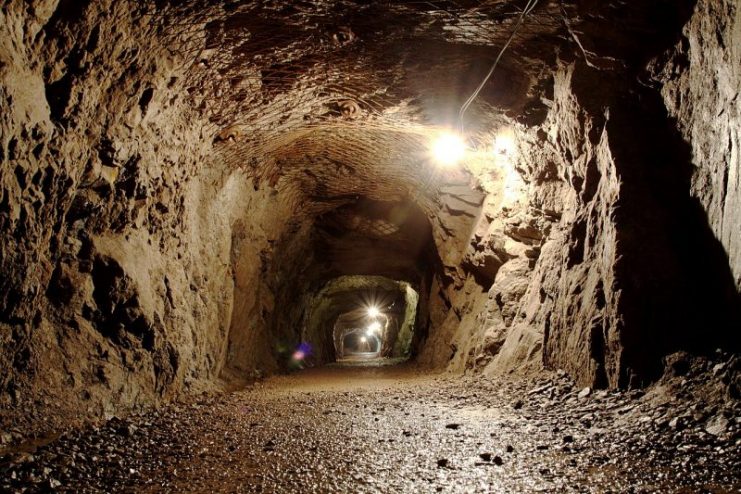
However, by January 1945, the war was turning against Hitler. It was only a matter of time before the Allies caught up with him.
According to stories from the Lower Silesian regions, as Hitler’s doom inched closer a train laden with gold and numerous treasures drove out of Breslau. The train is said to have been driven into a warren of unfinished tunnels and mines within the Owl Mountains.
This fabled Gold Train is said to have carried about 300 tons of gold, masterpieces, jewels, and weapons. However, 74 years have gone by, Lower Silesia is now a Polish territory, and the Gold Train is still a myth. Historians have failed to find definite proof of its existence.
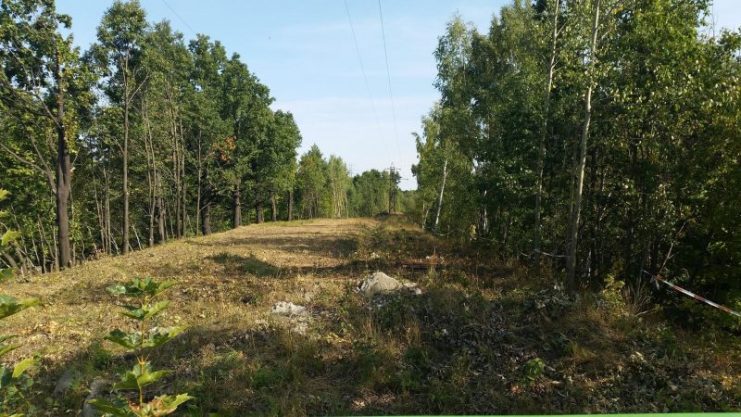
Photo by RafalSs –
CC BY-SA 4.0
In August 2015, Piotr Koper and Andreas Richter claimed to have knowledge of the whereabouts of the Gold Train. They released images from a ground-penetrating radar system that showed 99% likelihood of a hundred meter-long train hidden underground.
This sparked a media uproar and made Poland the latest tourist center. Numerous treasure hunters flocked to the country armed with numerous tools and utmost zest. But the hunt was utterly unsuccessful and was called off in August 2018. Kopper vowed to keep searching.
Will his persistence pay off? Nobody knows.
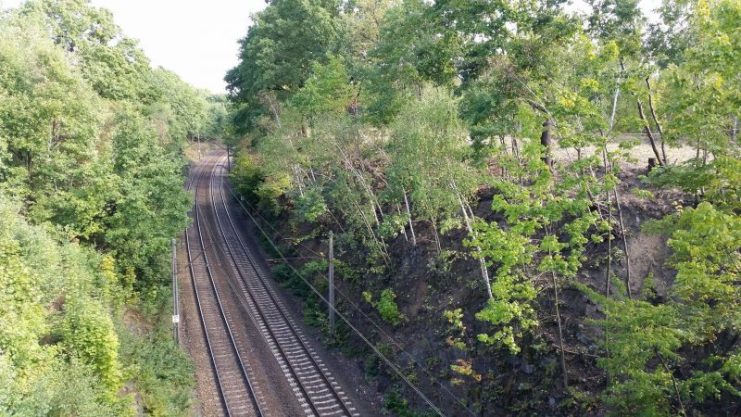
CC BY-SA 4.0
The Alpine Fortress
In late 1943, Heinrich Himmler planned a national redoubt for Nazi Germany. This redoubt, called Alpenfestung in German, was located in the mountains of southern Germany. Hitler was never fully supportive of the creation of the Alpine Fortress and its construction was not a very serious affair.
However, at the tail end of the war, intelligence reports reached Allied headquarters claiming that Nazi officials had been evacuated to a fortified region in southern Germany.
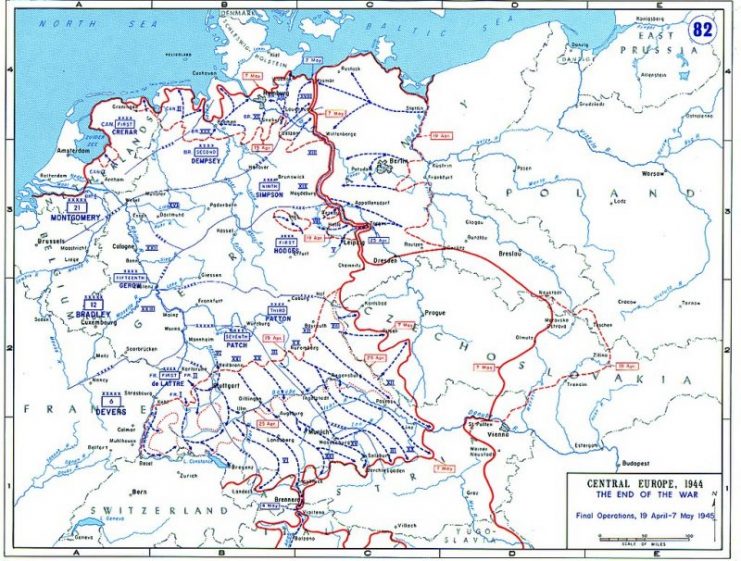
Nazi Germany’s minister of propaganda Joseph Goebbels began to spread rumors about the Alpine Fortress everywhere. This was to keep the Allies confused about the state of affairs within Nazi Germany’s government.
The Alpine Fortress was said to house a vast collection of supplies, weapons, and hardcore Nazis. The series of rumors and propaganda about the Alpine Fortress peddled by Nazi Germany were blown out of proportion.
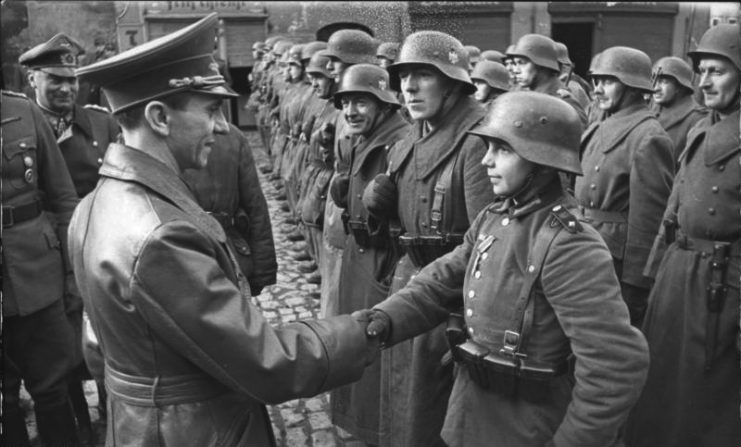
Decades after the war, rumors still claim that the Alpine Fortress was one of Hitler’s treasure troves. It was said that Hitler had stored over a million dollars’ worth of treasures in the redoubt, hoping to fund secret operations of “Werewolf” commandos who would wreak havoc on the Allies throughout Germany.
The mountains of southern Germany have since then been a destination for treasure hunters.
Yamashita’s Gold
Just like the Nazi Gold Train, the legend of Yamashita’s gold is one of history’s mysteries, torn between fact and fable.
But it is a well-known fact that during the Second World War, the Japanese slashed violently through Asia, tearing down cities and plundering valuables. According to some historians, the Japanese emperor appointed a special group called Kin no yuri, which literally translates to “Golden Lily,” to take care of looting treasures across Asia.
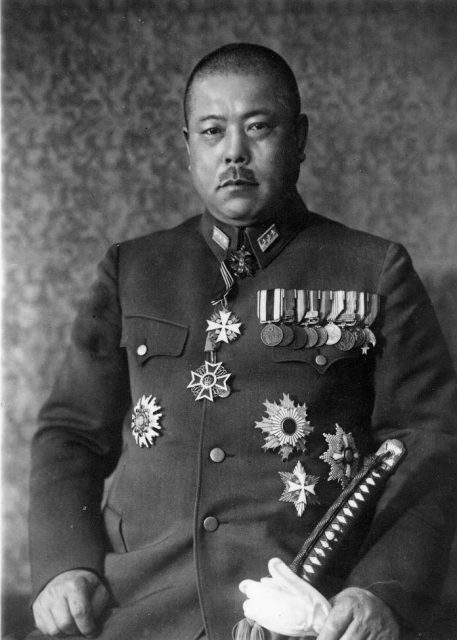
It is said that under orders from Japanese General Tomoyuki Yamashita, the looted treasures were stowed away in underground tunnels in the Philippines.
In the years that followed the end of WWII, there have been series of intense searches by both residents of the Philippines and foreigners. However, not much has come out of the treasure hunts.
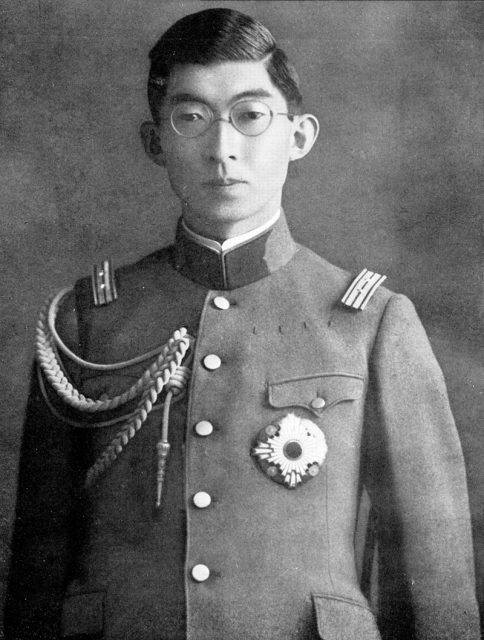
In 1988, Yamashita’s gold was central in a court case between Filipino treasure hunter Rogelio Roxas and erstwhile president of the Philippines Ferdinand Marcos.
Roxas claimed that he had gotten a map to Yamashita’s gold through the son of a former Japanese WWII soldier. He had promptly headed with a team to the destination and after hunting, they had discovered some proofs of the likelihood of the treasure trove’s existence.

They found bayonets, samurai swords, and skeletons in Japanese military uniforms. Also, they found a 3-foot-high, 2,200-lb golden Buddha and several stacked crates. Roxas claimed to have found gold bars in one of the crates.
But when Marcos, who was president at the time, learned about it, he ordered Roxas’ arrest and confiscated the findings. Roxas died on the eve of the trial.

Yamashita’s gold is still believed by some experts to be a myth. But there are many treasure hunters who still believe that the treasure trove is out there somewhere.
Maybe they’ll find it. Maybe they won’t.
Awa Maru
The Japanese ocean liner Awa Maru was built for and operated originally by Nippon Yusen Kaisha. However, during WWII, the shipping company lost the ship to the Japanese Navy and the ship’s purpose as a passenger service ship was changed during the Pacific War.
In 1945 the Awa Maru was in the Pacific transporting hundreds of stranded military personnel, diplomats, and civilians from Singapore. Late on the night of April 1, while sailing away from Singapore, she was intercepted in the Taiwan Strait by the US submarine Queenfish.
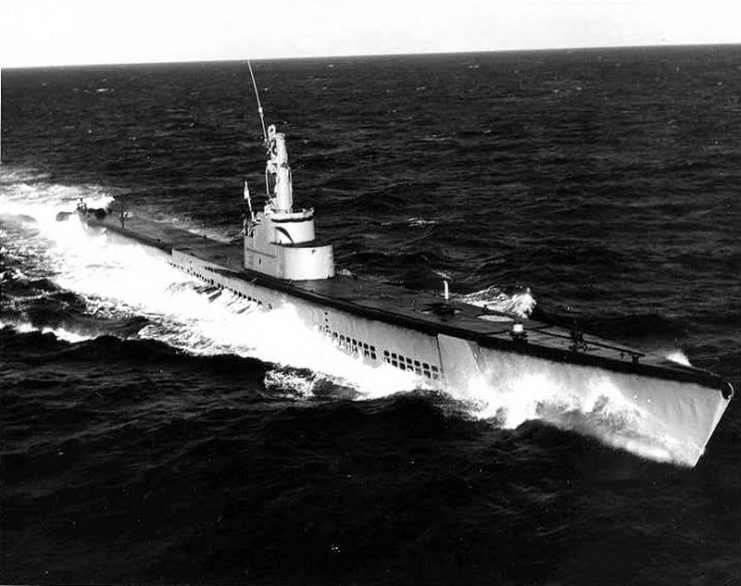
Queenfish mistook her for a destroyer even though Awa Maru was sailing as a hospital ship protected by the Red Cross and the “Relief for POWs” agreement. In the attack that ensued, Queenfish sank Awa Maru with a barrage of torpedoes. Of the 2,400 passengers on the ship, only one survived.
Prior to Awa Maru‘s last voyage, observers had watched the ship being loaded with things believed to be contraband at Singapore. It is rumored that among the things that sank with Awa Maru was about $5 billion worth of treasures including gold, platinum, and diamonds.
